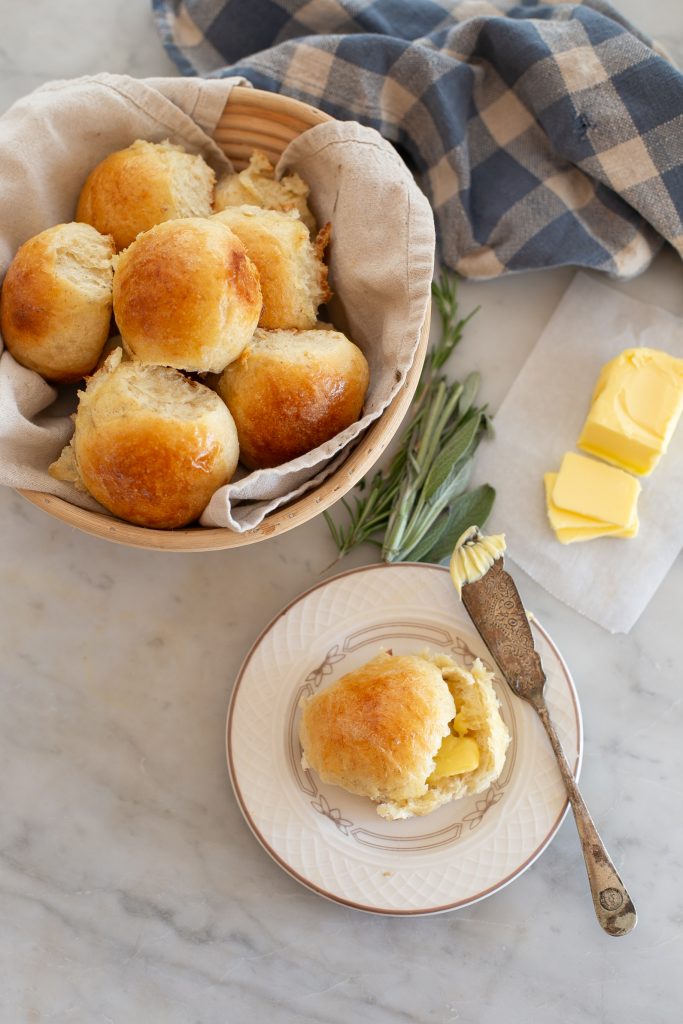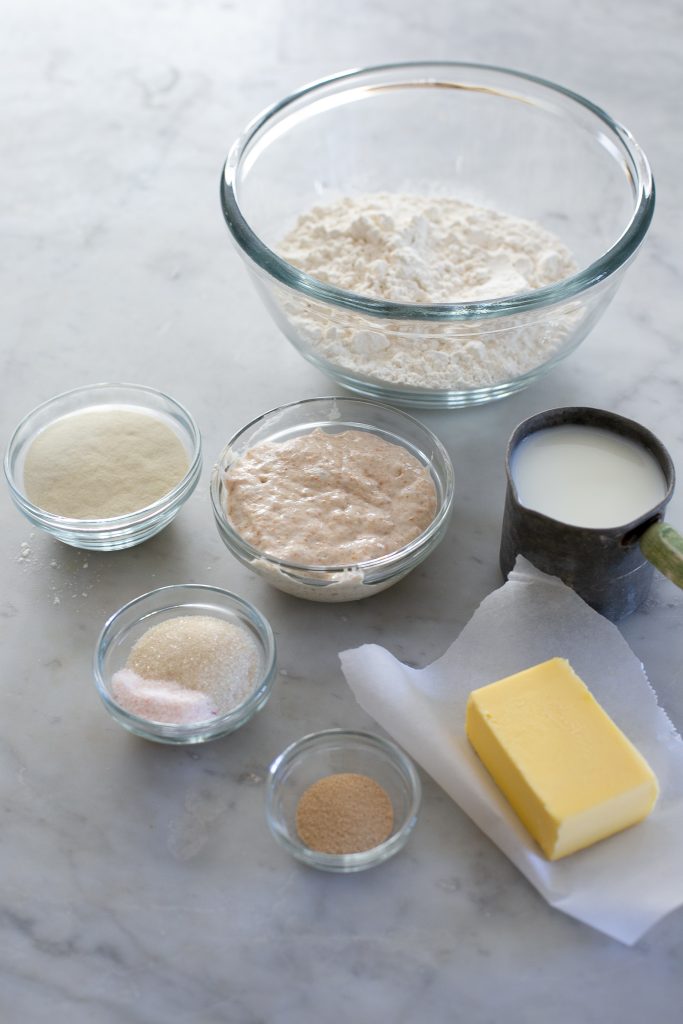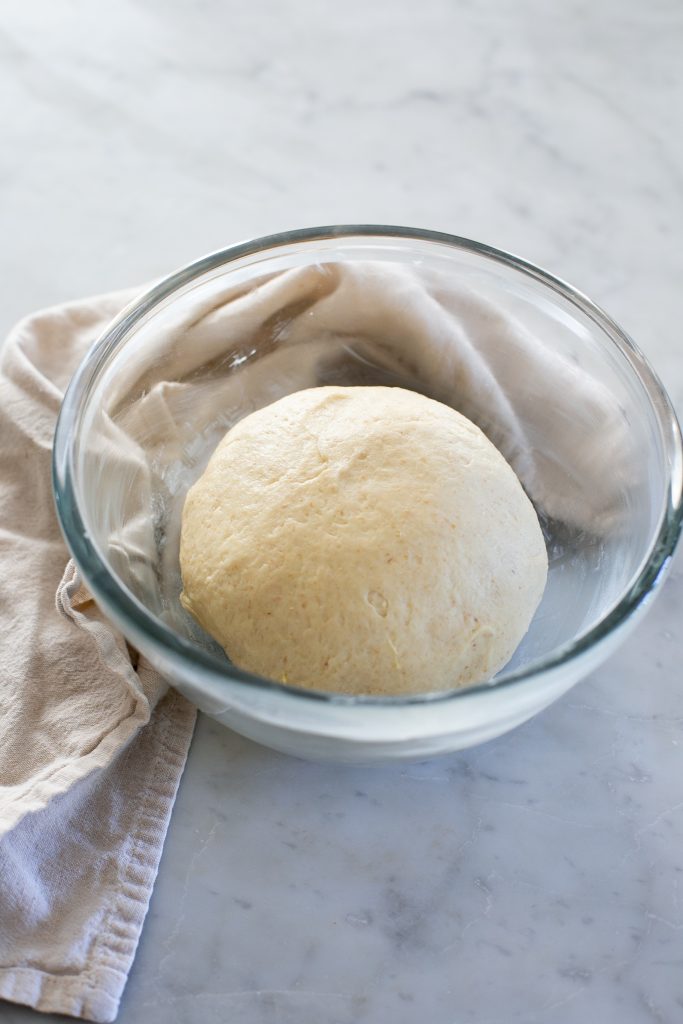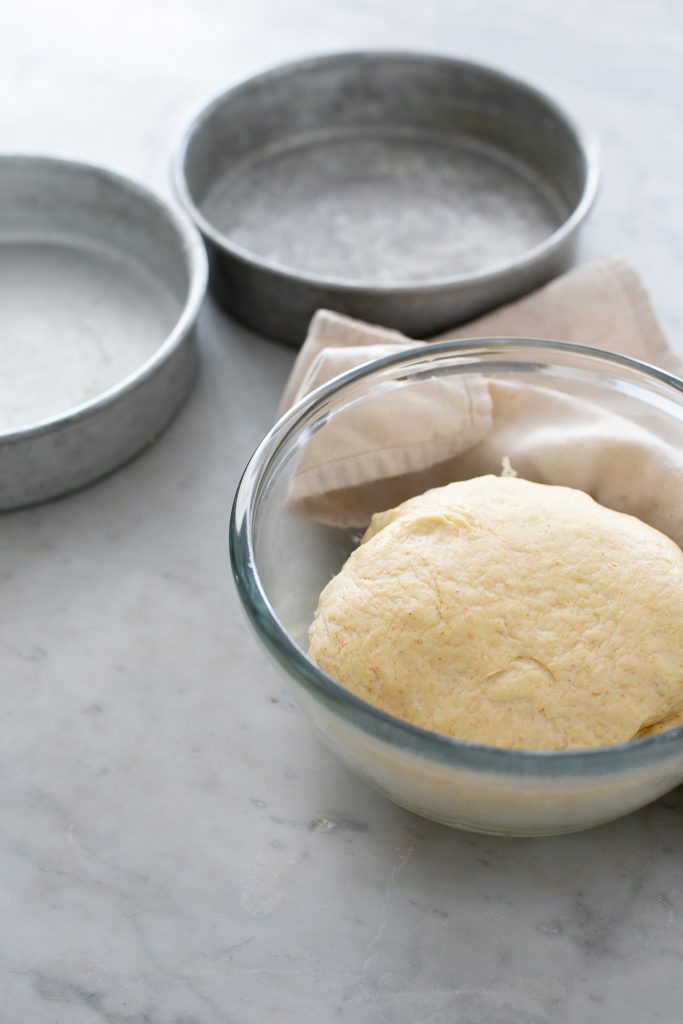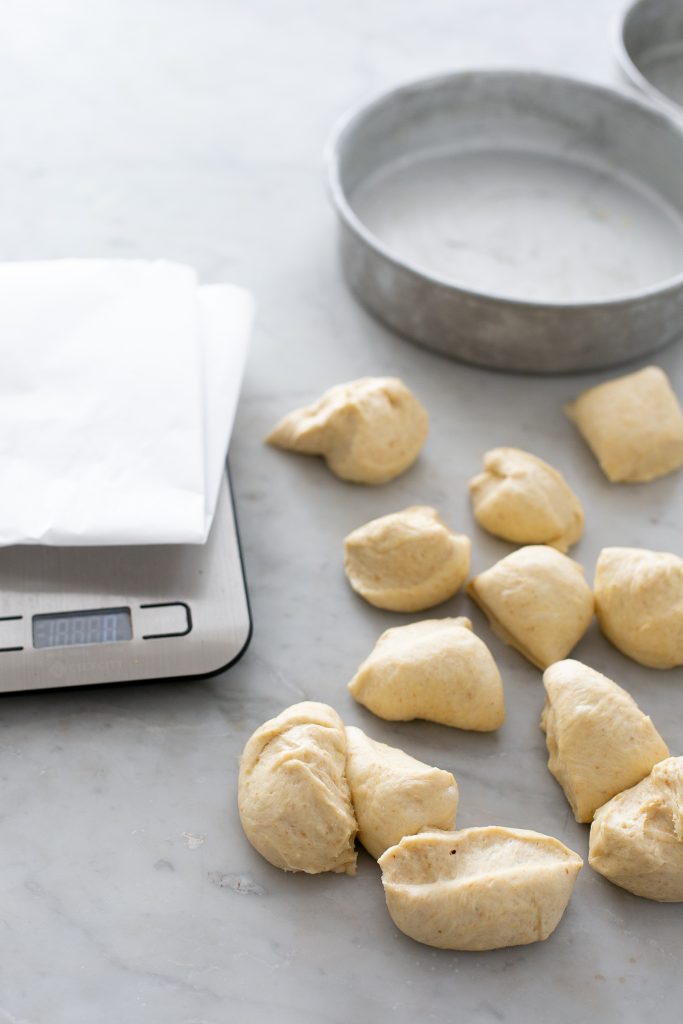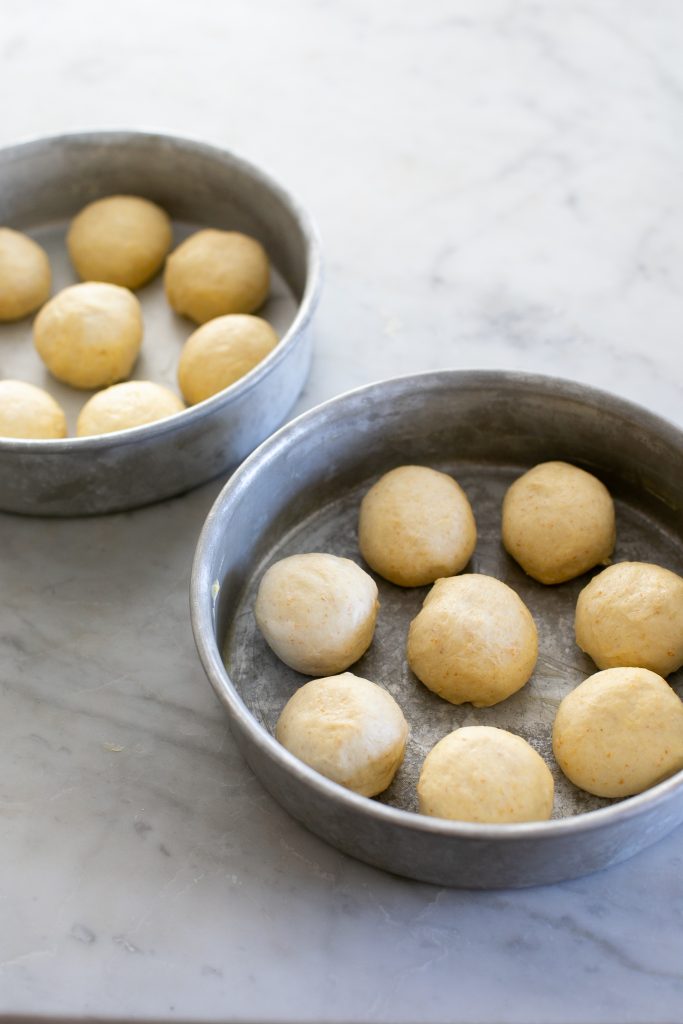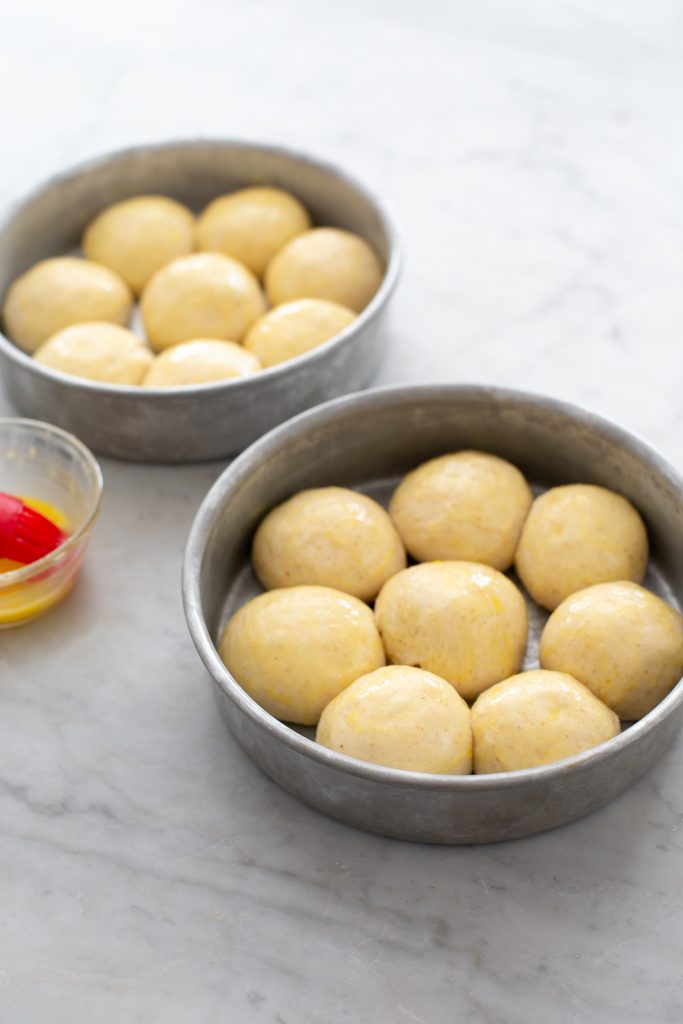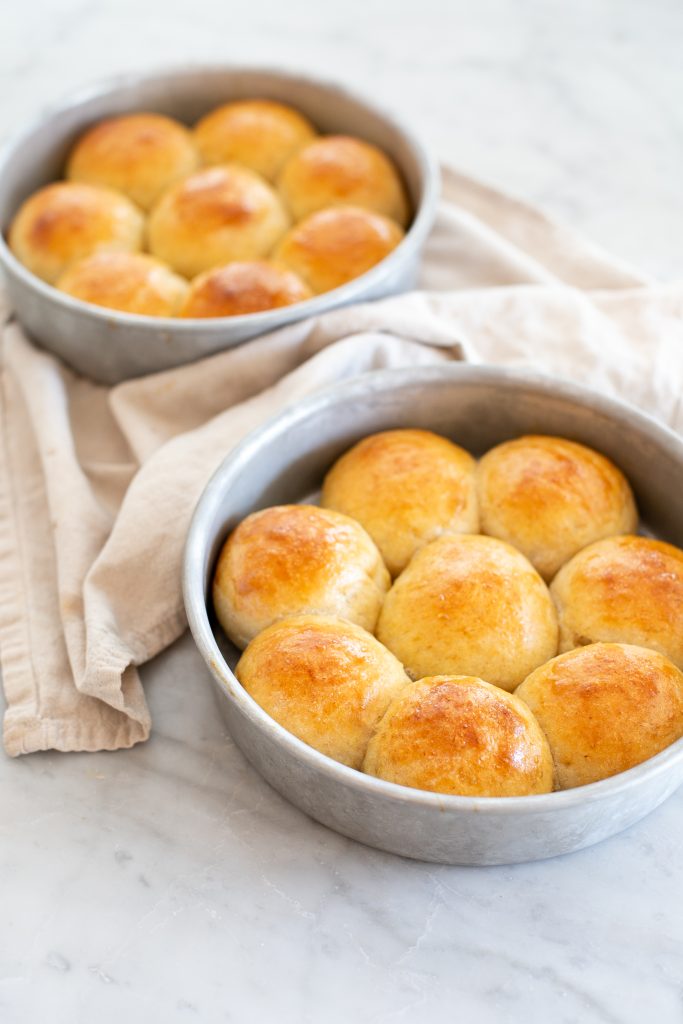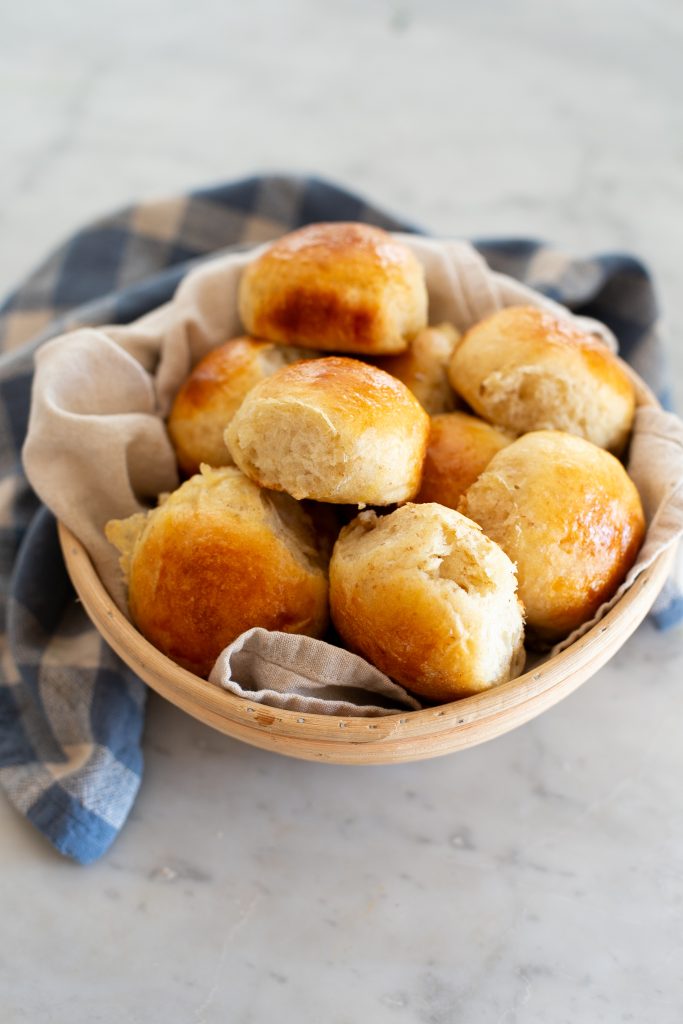Sourdough Dinner Rolls
There’s nothing quite like the smell of freshly baked soft sourdough dinner rolls filling your kitchen. These golden brown rolls that get their unique flavor and texture from a combination of potato flour, milk, and an active sourdough starter, are perfect for any occasion—from a simple weeknight dinner to a festive holiday feast. This sourdough dinner roll recipe skips the lengthy bulk fermentation time and instead uses two 60-90 minute proofs, making it doable for even first-time bakers.
Ingredients You’ll Need:
- Active sourdough starter
- Potato flour
- All-purpose flour
- A little commercial yeast
- Whole milk
- Warm water
- Butter
- Salt
- Sugar
- Egg
Supplies needed for Sourdough Dinner Rolls:
- Large mixing bowl or
- Stand mixer fitted with paddle and dough hook (If you have, if not you can do by hand.)
- 2- 8 inch round pans, or square pans
- Small bowl for egg wash
- Kitchen scale (not required but helpful)
Step-by-Step Instructions for the Perfect Sourdough Dinner Rolls
1. Prepare the Dough
In the bowl of a stand mixer, combine the active sourdough starter, potato flour, bread flour, and yeast. Using a paddle attachment, mix on low speed until just combined. Add the warm water, whole milk, and salt, then continue mixing until a smooth dough forms. Check the dough’s consistency by using the windowpane test—if you can stretch a small piece of dough thinly without tearing, you’re ready to move on.
2. First Proof
Transfer the dough to a lightly greased bowl and cover it with plastic wrap. Let the dough rise in a warm spot for about 60-90 minutes, or until it has doubled in size. The temperature of your kitchen can affect rise time, so keep an eye on it.
3. Shape the Rolls
After the first rise, transfer the dough to a lightly floured surface. Using a kitchen scale for accuracy, divide the dough into equal pieces. Shape each piece into small dough balls.
4. Second Proof
Place the shaped rolls into a round pan or baking dish, leaving a little space between each roll. Cover them with plastic wrap or a damp tea towel and let them rest for the second rise—another 60-90 minutes in a warm place, until puffy and touching.
5. Bake the Rolls
Preheat your oven to 350F.. Brush the top of the rolls with egg wash to achieve that golden brown color, and then bake for 20-25 minutes, or until the tops are golden and the sides of the rolls pull away from the pan.
Make ahead:
If you’d like to make these rolls and bake them the next day, place them in the fridge after shaping them in the pans and cover with plastic wrap. The next morning- bring the pans out and allow to finish proofing until the rolls have more than doubled in size and are all touching.
Storing Your Sourdough Dinner Rolls
If you have any leftovers, store them in an airtight container for the next day, keeping them soft and fresh. These rolls also freeze well after baking—simply thaw and reheat when needed.
Interested in baing Classic Sourdough bread? My favorite recipe is HERE.
Perfect accompaniment for soups such as:
- Easy Potato Soup
- Red Lentil Potato Soup
- White Bean Rosemary Soup
- Butternut Squash Carrot Soup
By skipping the bulk fermentation and opting for proofing, this recipe saves time without sacrificing taste. If you want to make these rolls without the yeast and only starter as a leavener, follow these tips:
- 1-Use very active sourdough starter discard
- 2-Allow the dough to bulk ferment for up to 12 hours in room temperature. Then shape the dough for a shorter ferment in the fridge. This option works, but the yeast makes these a one day project.
These soft sourdough dinner rolls are everything you want in a bread basket—light, fluffy, and full of that tangy sourdough flavor. Whether you’re serving them at a holiday dinner or for a casual meal, these rolls are sure to be a hit at the dinner table.
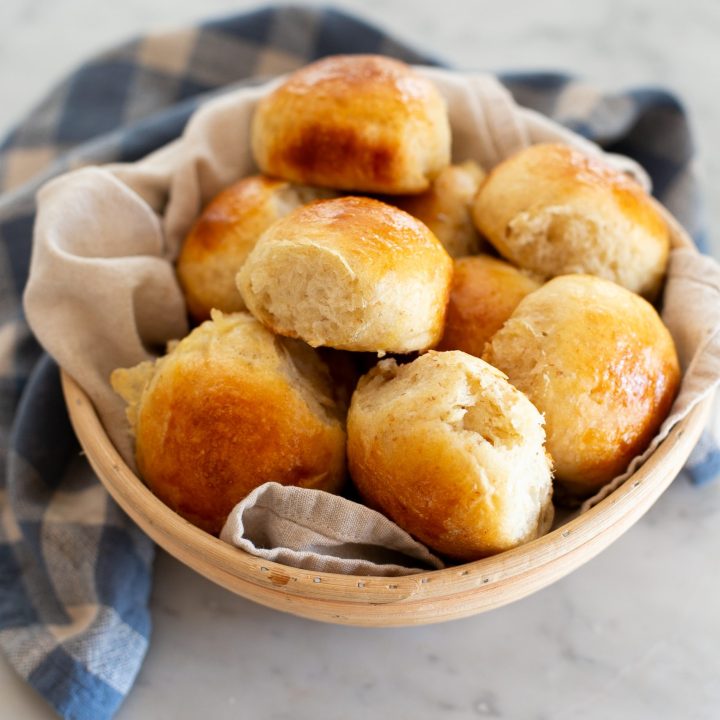
Sourdough Dinner Rolls
Ingredients
- 1/2 cup (113g) ripe (fed) sourdough starter
- 3/4 cup water, lukewarm
- 1/4 cup whole milk, lukewarm
- 2 1/2 cups (300g) all purpose flour
- 1 1/2 teaspoons (9g) table salt
- 2 tablespoons granulated sugar
- 6 tablespoons (85g) unsalted butter, at room temperature
- 1/4 cup (46g) potato flour
- 1 1/2 teaspoons instant yeast
- 1 egg for washing
Instructions
- In a large bowl combine warm water, milk and sourdough starter. Stir to combine. Add the flours, yeast, sugar, and salt. Use a wooden spoon or the paddle attachment of a stand mixer to combine until a shaggy dough forms.
- Gradually add the soft butter, one little bit at a time until incorporated into the dough. Switch to the dough hook, and mix for 5-7 minutes until dough is soft and smooth. (if you don't have a mixer turn dough onto the counter and knead by hand.)
- You will know dough is done with it's smooth and a small piece of dough stretched passes the windowpane test. (It can stretch and appear almost see through without ripping.)
- Cover dough with plastic wrap or a damp towel and proof for 60-90 minutes in a warm place.
- Turn dough onto the counter, and if you wish weigh the dough on your scale and divde by 16. This way the rolls are all going to be uniform.
- Divide the dough into 16 pieces and then shape each one into a round ball. (I like to flatten it a bit and then push it through a small hole I make with my hands.) Weigh each one to adjust slightly if needed.
- Place 8 rolls in each buttered pan, with one in the middle and the rest spaced apart not touching.
- Cover and proof for another 60-90 minutes or until the rolls have puffed up and they are touching in the pan.
- Preheat oven to 350F. Brush beaten egg on the rolls and bake for 20-25 minutes or until deeply golden.
- Allow rolls to cool slightly and serve warm.
Notes
Want to save one pan of rolls for later? Bake one pan until slightly less golden, wrap well in plastic wrap and ideally a ziplock bag, and freeze. When ready to serve, thaw at room temperature and when fully thawed warm in the oven letting them brown a little more.
You can also prep the rolls the night before baking by completing the steps through shaping and putting the rolls in the pan. Cover and put them in the fridge until the next day. Proof on the counter until puffy and doubled and then bake as directed.
Recipe adapted from King Arthur's Flour

